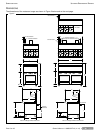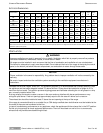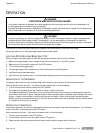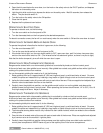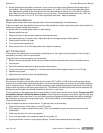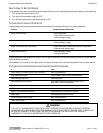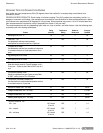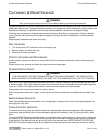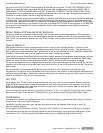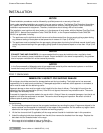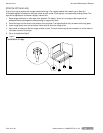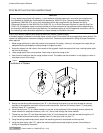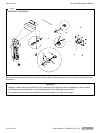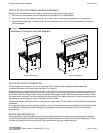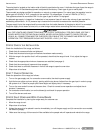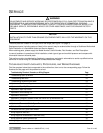
C
LEANING
&
M
AINTENANCE
U
LTIMATE
R
ESTAURANT
R
ANGES
P
AGE
14
OF
48 O
WNER
’
S
M
ANUAL
1190820
REV
3
(11/10)
the surface with SCOTCH-BRITE scouring pads or STAINLESS scouring pads. DO NOT USE ORDINARY STEEL
WOOL as any particles left on the surface will rust and further spoil the appearance of the finish. NEVER USE A
WIRE BRUSH, STEEL SCOURING PADS (EXCEPT STAINLESS), SCRAPER, FILE OR OTHER STEEL TOOLS.
Surfaces which are marred collect dirt more rapidly and become more difficult to clean. Marring also increases the
possibility of corrosive attack. Refinishing may then be required.
“Heat tint” is darkened areas that sometimes appear on stainless steel surfaces where the area has been subjected to
excessive heat. These darkened areas are caused by thickening of the protective surface of the stainless steel and
are not harmful. Heat tint can normally be removed by the foregoing, but tint which does not respond to this procedure
calls for a vigorous scouring in the direction of the polish lines using SCOTCH-BRITE scouring pads or a STAINLESS
scouring pad in combination with a powered cleanser. Heat tint may be lessened by reducing heat to equipment
during slack periods.
B
RIGHT
-A
NNEALED
S
TAINLESS
-S
TEEL
S
URFACES
To remove normal dirt, grease and product residue from stainless steel surfaces that operate at LOW temperature,
use ordinary soap and water (with or without detergent) applied with a sponge or cloth. Dry thoroughly with a clean
cloth. Never use any abrasive cleaner, pad, wire brush, scrapper, or file to remove material from the bright-annealed
surfaces.
C
ARE OF
G
RIDDLES
New griddles should be carefully tempered and cared for in order to avoid possible damage. To break in a new
griddle, first wipe it clean. Next, light all the griddle burners and turn them to low for one hour. Then gradually bring
each griddle up to frying temperature. Next, spread three or four ounces of beef suet, or as a substitute, baking soda,
to season it. Never allow water on a hot griddle and never wash it with soap and water.
Use a Norton Alundum Griddle Brick to clean the griddle. Always remember to heat griddle slowly because quick heat
may cause costly damage. Griddle plates cannot be guaranteed against damage due to carelessness. Never place
utensils on griddle. Do not overheat griddle above 550°F (288°C), as this will cause warpage or breakage.
Do not use any type of steel wool. Small particles may be left on the surface and get into food products. Do not clean
spatula by hitting the edge on the griddle plate. Such action will only cut and pit the griddle plate, leaving it rough and
hard to clean.
Do not waste gas or abuse equipment by leaving control knobs at “Full On” position or thermostat at a high
temperature if not required. During idle periods, set control knobs at “Low” position or thermostats to low temperature
settings to keep griddle warm. Reset control knobs or thermostats, as required, for periods of heavy load. Turn control
knobs or thermostats to OFF at end of daily operation.
H
OT
T
OPS
Allow range to cool. If water is used on tops while still hot, they may crack. Avoid this practice. Remove tops from
range and clean surfaces with hot water and detergent. A wire brush may be used on the underside of the hot top
plate. It is recommended not to clean tops while still on range, even if cooled, as excessive water will drip into the
burner box and deteriorate the metal.
Do not waste gas and abuse equipment by leaving all burners “Full On,” if not required. During idling periods, adjust
burner control knobs to keep top warm. Re-adjust burner control knobs as required for periods of heavy loads.
T
OP
B
URNERS
Little attention is needed, but if spillage should occur, it may be necessary to clean around pilot areas, air mixer and
under burners. Use a wire brush if necessary.
Periodically, burners (particularly open top type) should be removed and cleaned. Allow interior to drain. Dry
thoroughly before replacing.
Burner grates can be lifted out for cleaning. Clean them with a solution of hot water and strong soap or detergent.
The flash tubes must be clean and properly aligned with the pilot housing to insure good top burner ignition. Pilots
should have a 1/2" to 5/8" blue flame. Avoid carbon producing tip or unstable blowing or lifting of flame.



